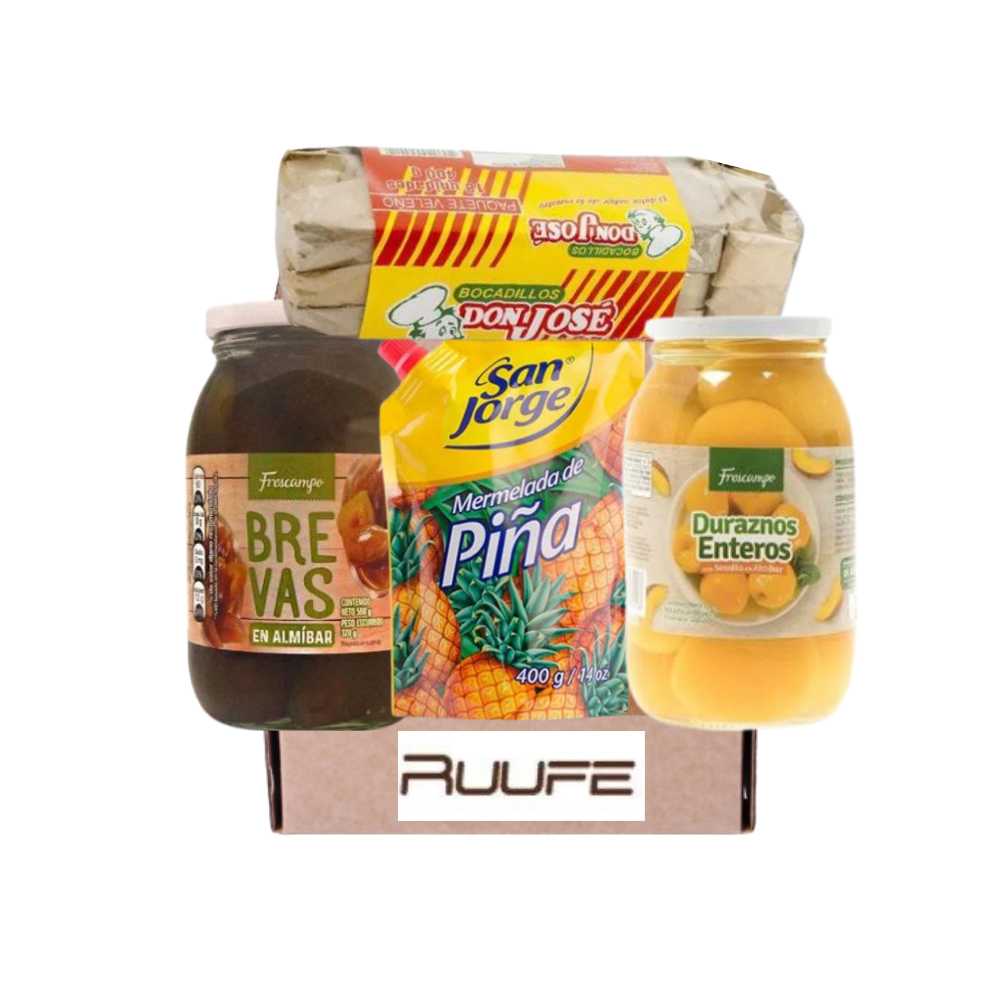Colombian fruits : from the most common to the most exotic
Colombian fruits are varied and delicious. Did you know that Colombia is the second most biodiverse country in the world? Yes, and one of the privileges of living in a megadiverse country where all thermal zones can be found throughout its geography. As a result, you can enjoy many delicious fruits.
This has led to the country being recognized worldwide for the large amount of food it produces. Each region has its typical fruits. In this article we will take you on a tour of Colombia through its fruity flavors. Don't miss this delicious trip!
Colombian yellow fruits
Yellow fruits are known for being rich in vitamin C, potassium, magnesium and folic acid . These components strengthen the immune system and help with cardiovascular and skin health (FAO, 2020). In Colombia, there are many fruits of this color, among which we can find the following.
Cape Gooseberry
The cape gooseberry is a small yellow fruit that is produced mainly in the cold, highlands of the Andean Region. This berry has a sweet flavor with acidic notes and is one of the types of Colombian fruits that are best enjoyed straight from the plant. However, it is perfect for making jam, ice cream, yogurt, juice, desserts and even wine.
Pitaya
The pitaya produced in Colombia is characterized by its sweetness. It is one of the Colombian fruits with the most digestive properties and one of the most sought-after in the world today (ICA, 2019). The pitaya plant is a thorny cactus that can be grown in various climates and altitudes. The exterior of the fruit is yellow with spikes emerging from the tips. The inner pulp is white, with a soft and fleshy consistency and rich in water and fiber. It contains vitamins B, C and E; as well as phosphorus and calcium.
Passion fruit
Passion fruit, as it is also known in other countries, is a fruit that is produced in different regions of the country. The passion fruit plant is a vine that thrives in a wide variety of climates and altitudes. Throughout the country, this sour fruit with yellow pulp that covers small seeds is consumed mainly in juice; either in water or milk. It is also used in desserts, sponge cakes, jams, cocktails; among other exquisite preparations.
Guava: another Colombian fruit
Guava is another fruit that can be found in practically all of Colombia. This fruit is yellow on the outside and has a pinkish pulp inside in which the small seeds are suspended. Guava is rich in vitamin C, which is why it has antioxidant properties. Its flavor is sweet and very characteristic. In the country it is usually consumed mainly in juice and as a base for the popular guava jam. In addition to the famous guava snacks .
Peach
Santander, Norte de Santander and Boyacá are the three departments where there are more crops of this fruit. The peach is one of the Colombian fruits that has stood out the most worldwide in recent years. Its best features are its good size, its resistance and its delicious sweet flavor. One of the most popular ways to consume this delicious fruit is in syrup .
Colombian red fruits
Red fruits can be good sources of vitamin C, lycopene and magnesium, these substances are antioxidants and contribute to the prevention of non-communicable diseases (FAO, 2020).
Chontaduro: one of the most characteristic Colombian fruits
The chontaduro is the most representative fruit of the Colombian Pacific region. This fruit grows on a palm tree that produces clusters of chontaduros. The chontaduro has a red shell and the interior can vary from deep red to pale yellow. This fruit must be cooked before being consumed. Juices can be prepared with the chontaduro or it can be consumed in the traditional way: with salt, lemon and honey. This is the most popular way of doing it.
Tree tomato
The tree tomato is one of the most popular Colombian fruits in the country. Its production is concentrated in the departments of Antioquia, Tolima and Cundinamarca. The taste of this fruit is acidic, so it is mainly consumed in juice sweetened with sugar. The exterior of the tree tomato is red and its interior is reddish yellow or orange. In addition to juices, it is used to prepare desserts, jams and sweets.
Colombian green fruits
Fiber, calcium, magnesium, vitamin K and vitamin C are just some of the elements that green fruits can provide. These components are essential for the preservation of the different body systems (FAO, 2020).
Figs
The fig is a bulbous fruit that is normally consumed in Colombia in syrup accompanied by country cheese. It is also very popular with arequipe . Along with the veleño snacks and cocadas, they are among the traditionally prepared Colombian sweets that best represent us. Fig crops in Colombia are mainly found in the department of Boyacá.
Soursop
Soursop is a fruit with a green skin and white, fibrous pulp. It has a characteristic flavor and an indescribable sweetness. In different regions it is often used to make juices, desserts and exquisite sweets. Soursop is a powerful antioxidant due to its high vitamin C content. In addition, it provides a lot of fiber, which favors intestinal transit.
We hope this article motivates you to try the delicious Colombian fruits . Remember that there are regions in the country where agriculture is the pillar of their economy. Thanks to these regions, the food industry in Colombia is sustainable and we can enjoy great preparations.
So eating our fruits is an excellent way to support the livelihood of thousands of farmers. Plus, they are good for your body and at the same time you indulge your palate. Which of the fruits we brought you today do you like the most? Which one(s) would you add to the list?
Bibliographic References
El Espectador. (July 11, 2014). Colors in fruits and vegetables: nutrients and benefits . https://www.elespectador.com/salud/colores-en-frutas-y-verduras-nutrientes-y-beneficios-article-503804/
FAO. (2020). Essential fruits and vegetables in your diet: International Year of Fruits and Vegetables, 2021 . http://www.fao.org/3/cb2395es/cb2395es.pdf
García Sierra, JC (July 16, 2020). Discover the nutritional powers of Chontaduro . Colombia.com. https://www.colombia.com/gastronomia/noticias/frutos-colombia-chontaduro-275364
Hernández Sánchez, LY (March 21, 2019). The 12 fruits that every foreigner should try in Colombia . Colombia.com. https://www.colombia.com/gastronomia/noticias/las-12-frutas-que-todo-extranjero-debe-probar-en-colombia-222997
ICA. (March 7, 2019). Pitahaya growers in Boyacá are updating themselves to take advantage of international markets . https://www.ica.gov.co/noticias/ica-cultivadores-pitahaya-boyaca-mercados


